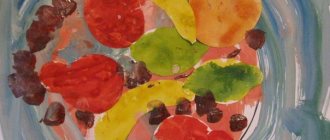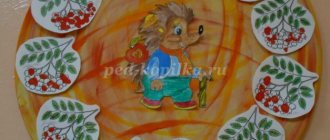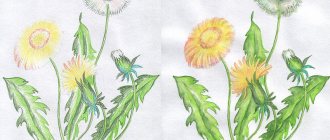Interactive coloring book. Master class with photos. Presentation
Master class “Technological technique “Interactive coloring” when creating an interactive game”
Author Natalya Sergeevna Rostova, teacher of the first category, MBDOU “Kindergarten No. 155”, Nizhny Novgorod. The master class is intended for educators, teachers and parents. Goal: to use the features of technological techniques when creating interactive games. Objectives: - reflect the specifics of the technological method; — teach how to use the features of interactive coloring when creating an interactive game; — improve pedagogical competence; — expand the possibilities of using ICT technologies when working with children. To create an interactive game you need: - a PC; — pictures for assignments; — tasks selected in advance for children, appropriate for their age; - Computer and PowerPoint skills. It’s easy to create interactive games for preschoolers yourself if you master a few technological techniques. One of these is interactive coloring - an outline image (coloring) is given and after the child completes the task, part of this image is colored. After completing all the tasks we receive a color drawing. The technology for creating interactive coloring books is easy to master using the capabilities of Microsoft Office Power Point. Progress of creating the game: Stage 1. Preparing images for interactive coloring On the Internet we find a coloring image or draw a contour coloring ourselves and save it on the computer. When saving the file, give it a name, for example, 1.jpg. It is best to create a folder in advance in which we will save all the images for coloring. For example, I have an owl.
This is what it will look like after filling in all the elements.
To fill parts of the coloring book and save images with filling, you will need a graphics editor. You can use the Paint.net program. Launch the Paint.net program, select File - Open, specify the path to the coloring image that we saved. To fill parts of the image, use the Fill tool and select the fill color in the Palette panel. After selecting the Fill tool, fill part of the coloring with the desired color. Select File - Save As. In the Save As dialog box, enter the file name 2.jpg and click Save. We continue to sequentially fill in the coloring elements and save images with the names 3,4, 5, 6, etc. We will get the following images.
Stage 2. Creating a game. Let's launch PowerPoint. Let's create a slide, select Insert - Picture. Open the folder in which the coloring files are located and select image 1.jpg. Select Insert – Shapes – Rectangles.
After designing the slide, we will create copies of it. To do this, right-click on the slide and select Duplicate Slide. Duplicate the slide until we have as many slides as the number of coloring images that were saved (not counting the title slide).
In the Insert Picture dialog box, select the following image 2.jpg.
The picture will be placed in the place where the first one was. On the remaining slides we change the images in the same way. To do this, right-click on the image and select Edit Picture. The pictures cannot be moved to create the feeling of one picture that is gradually being colored. You should get the following slides. We select tasks and answers to them - correct and incorrect.
Adding animation to objects: Adding animation to correct and incorrect answers, hyperlinks and triggers, control buttons.
Select the object, set the animation (Tab “Animation” “Animation Settings”). Add effect (in/highlight/out). Trigger/switch setup. Accompany with sound effects. For the correct answer, let's create a hyperlink. Select the correct answer and select Hyperlink on the Insert tab. In the Insert Hyperlink dialog box, select Place in Document - Next Slide - OK. Thus, when demonstrating a presentation, when you click on the correct answer, a hyperlink will work and the next slide will open, on which one of the coloring areas will be filled (at the same time, transition effects should not be set for the slides so that the slides change imperceptibly).
On the last slide, do not forget to praise the child for his work and insert a picture, for example, a fireworks or an emoticon clapping his hands. Stage 3. Final Design a title slide, a slide with the rules of the game, a slide with links to the sources used.
Testing the game - check the animation of all objects several times. Save the game. Select File - Save As. Specify the file name and file type. I wish you success in creating interesting interactive games.
In the modern world, they are the path to children’s successful acquisition of knowledge, and for teachers and parents they are a tool for monitoring the child’s level of assimilation of this knowledge. For a teacher or parent, this is also a kind of test that will allow you to find out gaps in children’s knowledge and allow you to work on them in a timely manner and fill them. Presentation on the topic: Specifics of the technological technique interactive coloring
We recommend watching:
Interactive games for literature lessons in grades 5-11 Interactive game for primary school students “Wild Africa” with presentation Quiz with answers and presentation for schoolchildren in grades 7-8. Artists of Udmurtia Development of communication skills of children 5-7 years old in theatrical activities
Similar articles:
Interactive game “Me and my children’s organization” for students in grades 5-9
Legal game for grades 8-11 “Our choice is our future!”
Methods of conducting physical education classes in kindergarten
Morning exercises in the preparatory group in a playful way
Teasing games for children 5-6 years old





